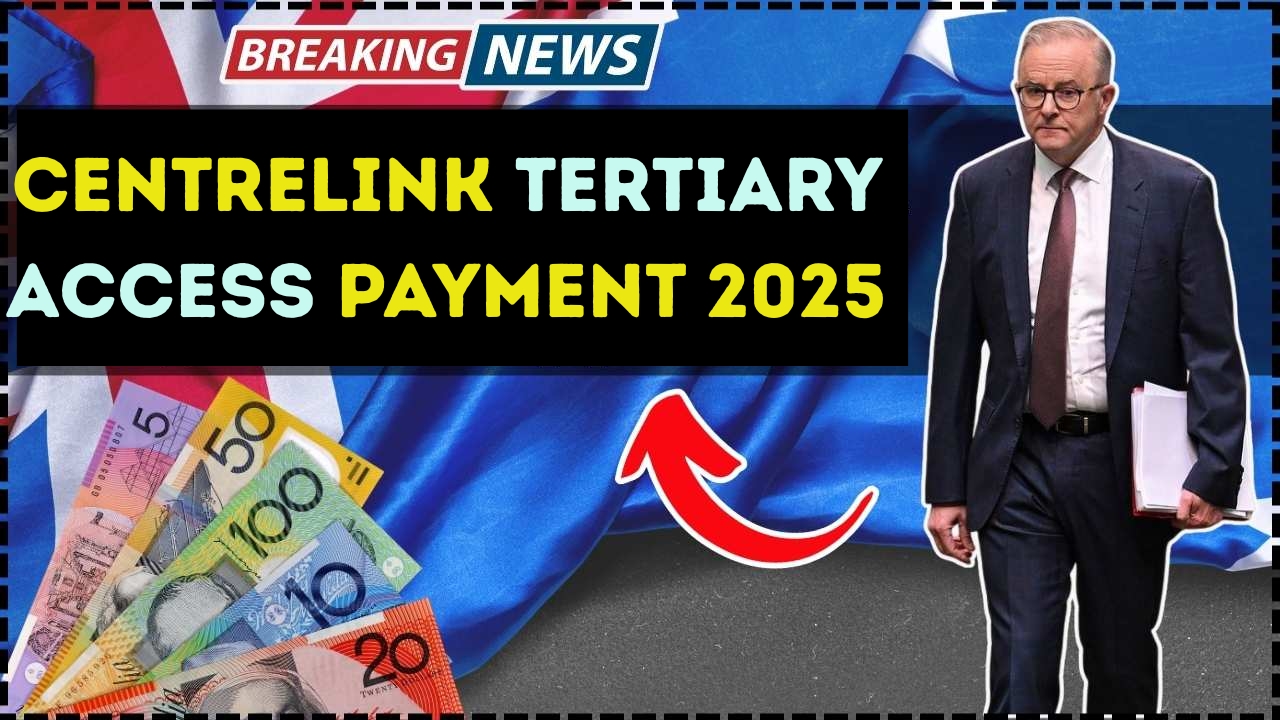If you’ve recently wrapped up high school and are about to take that big leap into tertiary education, you probably know that moving away from home or even just settling into a new campus life isn’t exactly cheap. Between rent, travel, textbooks, and setting up a whole new routine, the costs add up. That’s exactly why the Australian Government offers the Centrelink Tertiary Access Payment (TAP). It’s designed to give school-leavers some financial breathing room as they kick-start their higher education journey.
Now, in 2025, this payment has become even more important, as more students are moving into regional universities and facing higher living expenses. Let’s break it down in a simple, conversational way—what it is, who’s eligible, and how you can actually secure your payment.
What is the Tertiary Access Payment?
In plain terms, the Tertiary Access Payment is a one-off, means-tested payment that helps eligible Year 12 school leavers with the cost of relocating or beginning tertiary study. It’s a government-backed initiative provided through Centrelink.
The payment is specifically there to ease the pressure of transition. So, if you’re stressing about buying a laptop, paying that first month’s rent, or even just covering transport costs, this is one of those support systems designed for you.
Payment Amounts in 2025
Here’s the good news—it’s not a tiny sum. Depending on your situation, the payment can make a decent dent in your upfront costs:
| Location/Condition | Payment Amount (2025) |
|---|---|
| Students moving more than 90 km for study | Up to $5,000 (one-off) |
| Students moving within regional areas | Up to $3,000 (one-off) |
Now, it’s worth noting—this isn’t like Youth Allowance which is ongoing. The TAP is once only, but honestly, it can be a real game-changer when you’re trying to establish yourself at the start of your tertiary journey.
Who is Eligible in 2025?
Okay, so here’s the part everyone asks: Do I actually qualify? The government has set some very clear conditions, and you’ll need to tick these boxes.
- You must have completed Year 12 (or equivalent) in 2024.
- Age requirement: You need to be between 17–22 years old at the time of starting your course.
- Course requirement: You must be commencing a full-time, eligible tertiary course in 2025. This usually means university, TAFE, or another higher education provider that’s recognised.
- Relocation requirement: The payment is designed for those who are moving at least 90 km away from home to study, or moving within regional areas. If you’re still living at home and commuting locally, you’re unlikely to qualify.
- Residency: You need to be an Australian citizen or permanent resident.
- Means test: Household income conditions apply. Families with very high incomes may not qualify.
In short—if you’re a school leaver, under 22, and moving away from home to study in 2025, there’s a good chance you’re eligible.
How to Apply for the TAP
Now, let’s talk about actually securing the payment. It’s not as scary as it sounds, but you’ll want to get things organised early.
- Set up your myGov account (and link it to Centrelink if you haven’t already).
- Gather your documents. This means proof of identity, evidence of your university or TAFE enrolment, and details about your new residential address.
- Submit your claim online through Services Australia. The process is mostly digital now, which makes things easier.
- Wait for assessment. Centrelink will review your claim and might contact you if they need extra documents.
- Payment release. Once approved, the payment is usually deposited directly into your nominated bank account.
Tips to Maximise Your Chances
Honestly, a lot of students delay applying and then get caught up in the chaos of starting uni. My advice? Apply as soon as you have your course acceptance letter.
- Double-check your documents—missing one proof can cause frustrating delays.
- Keep track of deadlines; while it’s not a scholarship with limited seats, Centrelink does have cut-off periods for claims.
- If in doubt, call Centrelink or chat with your uni’s student support service. They’re used to helping new students with this exact process.
Why This Payment Matters
To be fair, $3,000–$5,000 isn’t going to cover your entire first-year costs. But it’s not supposed to—it’s meant to bridge the gap between finishing high school and starting adult life away from home. Think of it as a “kickstart fund” that gives you breathing space to focus on your studies instead of panicking about how you’ll pay that upfront bond or how you’ll afford course materials.
And with 2025 shaping up to be a competitive and expensive year for students, every little bit of financial help counts.
The Centrelink Tertiary Access Payment 2025 is more than just a government handout—it’s an investment in students who are taking a bold step toward their future. If you’re a Year 12 leaver moving into higher education, and you meet the eligibility conditions, it’s absolutely worth applying. Don’t leave free money on the table—secure it early, use it wisely, and give yourself the best possible start to your new academic life.
FAQs
1. Can I get both Youth Allowance and the Tertiary Access Payment?
Yes, you can. TAP is a one-off payment, while Youth Allowance is ongoing support.
2. What if I’m studying part-time?
Unfortunately, part-time students aren’t eligible. You must be enrolled full-time.
3. Do I need to move out of my parents’ house to qualify?
Yes. The TAP is specifically for students who relocate at least 90 km for study.
4. How long does the payment take to process?
Typically, a few weeks after approval, but it can be quicker if your documents are in order.
5. Can international students apply?
No, the payment is only available to Australian citizens and permanent residents.




